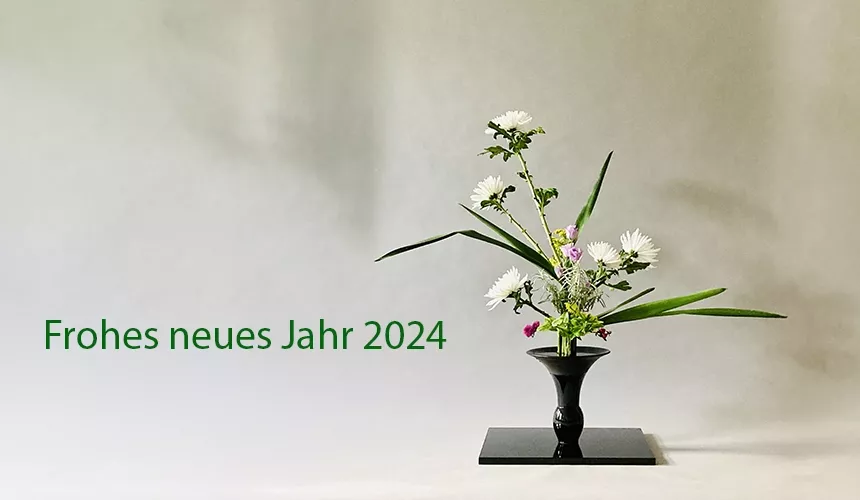
An eventful Ikebana year has come to an end and new ikebana events are already casting their shadows ahead. In Japan, New Year's Day - known as Oshōgatsu - is always a special day, as it is the most important festival in the Japanese calendar. While the 'Ode to Joy' (Japanese: 'Fu-Ro-I-De') is traditionally performed by orchestras in Japan at the end of the year, the first sunrise on New Year's Day has a special significance. Many Japanese people then climb one of the mountains, such as Takao-san (Tokyo's local mountain) or the famous Fuji-san, whose peaks are covered in snow, especially in winter, of course.
The New Year Rikka Shofūtai takes up this impression, which can also be seen in most photos of Fuji-san. The white chrysanthemums symbolise the snow-covered summit of Mount Fuji. Behind the central axis of the arrangement (Shoshin), the first rays of sunlight are already appearing in the background to illuminate the young, new, first day of the year and welcome in the new year. A year in which mindfulness for an intact nature with green forests, meadows and fields is once again of great importance. This hopeful greenery plays an important role in this rikka. If you look at the lower part of the arrangement, you can already see a hint of the colours of spring in the pink of the small chrysanthemums, but the red berries of the hypericum can also be seen as a hint of winter.
In Ikebana, the past, present and future come together as one, expressing strength, vigour and confidence. To start something new, but not to repress the experience of the old.
With this in mind, we wish all Kadōka a wonderful start to an eventful, colourful and fulfilling 2024.